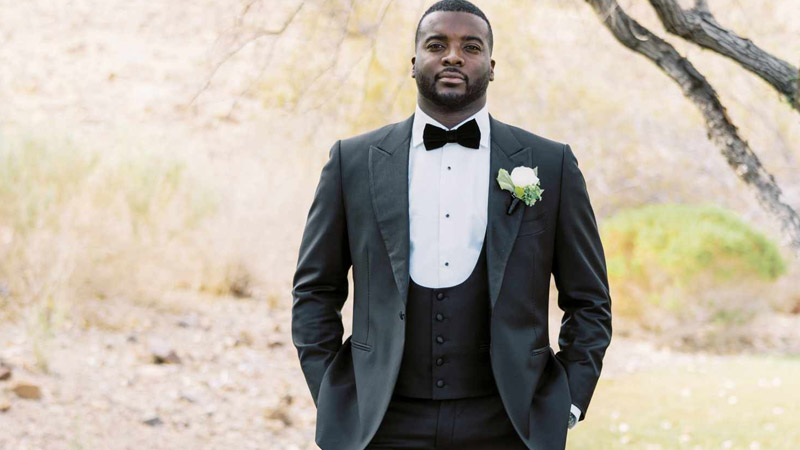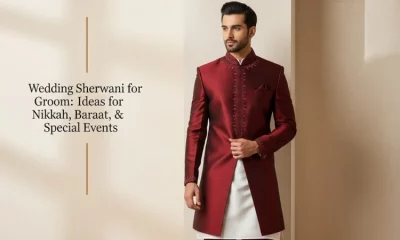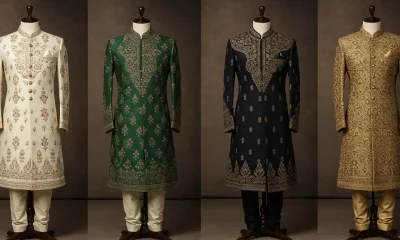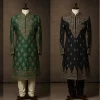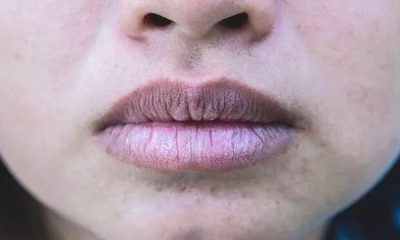Lifestyle
Quantitative Handbook for Men’s Fashion: Focusing on Tuxedo Suits
Let’s be honest; the world of men’s fashion can be somewhat of a maze. With a multitude of styles, fits, and looks to navigate, it is easy to feel overwhelmed.
Enter the realm of numerical style guides – an approach that breaks down the art of men’s styling into simple, easy-to-follow numbers. We will help decode the numerical guide to men’s styling, with a particular emphasis on elegant tuxedo suits.
1. The Rule of Proportions
Whether it’s a tuxedo suit or casual wear, the rule of proportions reigns supreme. Your clothes should match your body type, ensuring balance and harmony in the way you look. If you have a more substantial build, a double-breasted jacket might work best. For those with a slender physique, single-breasted tuxedos with a slim-fit design can help emphasize your frame.
2. The 2/3 Button Rule
The age-old debate on the number of buttons to fasten on a suit jacket can be answered with the 2/3 rule. In a three-button suit, you should fasten the top two, leaving the bottom one undone. In a two-button suit, fasten only the top button. This rule aids in creating a streamlined silhouette that highlights the shape of the tuxedo suit and your figure underneath it.
3. The Perfect Fit: Numerical Measurements
Accurate measurements are crucial to ensuring your tuxedo suit fits like a glove. Key areas to measure are the chest, waist, hips, and the length of your arms and legs. A well-tailored tuxedo suit is a perfect blend of comfort and style, and the fit should allow for natural movement without appearing baggy or overly tight.
4. The 1/2 Inch Shirt Cuff Rule
When wearing a tuxedo suit, ensure about a half-inch of your shirt cuff is visible beyond the sleeve of your jacket. This little detail adds a sophisticated touch to your overall look and signifies meticulous attention to detail.
5. The Trouser Break
The trouser break refers to the small wrinkle caused when the top of your shoe stops your trouser leg from falling to its full length. Aim for a medium break – not too long that the fabric bunches up over your shoe, and not too short that your socks are visible when standing.
6. The Tie and Lapel Width Rule
The width of your tie should correspond to the width of your lapel. Wide lapels call for a wider tie, while narrow lapels call for a thinner tie. This keeps your look proportional and balanced.
7. The 12-inch Pocket Square Rule
A pocket square adds a dash of personality to your tuxedo suit. When folded, it should be approximately 12 inches, but not so large that it bulges out of the pocket. A subtle peek of fabric is what you’re aiming for.
8. Tuxedo Buttons and Cufflinks
Your tuxedo’s buttons and cufflinks should be complementary. As they are the most noticeable accessories on your tuxedo suit, they should match in color and style.
9. The Sock Length
Ensure your socks are long enough that your skin doesn’t show when you sit down. Knee-length is an ideal choice, especially when donned with a tuxedo suit.
10. Shoe and Suit Color Coordination
Lastly, the color of your shoes should complement your tuxedo suit. Black suits demand black shoes, while navy suits work well with black or brown shoes. Grey suits offer the most flexibility and can be paired with black, or brown.


